
Horse-flies and deer flies are true flies in the family Tabanidae in the insect order Diptera. The adults are often large and agile in flight. Only female horseflies bite land vertebrates, including humans, to obtain blood. They prefer to fly in sunlight, avoiding dark and shady areas, and are inactive at night. They are found all over the world except for some islands and the polar regions. Both horse-flies and botflies (Oestridae) are sometimes referred to as gadflies.

Francis Walker was an English entomologist. He was born in Southgate, London, on 31 July 1809 and died at Wanstead, England on 5 October 1874. He was one of the most prolific authors in entomology, and stirred controversy during his later life as his publications resulted in a huge number of junior synonyms. However, his assiduous work on the collections of the British Museum had great significance.

Alexander Henry Haliday was an Irish entomologist. He is primarily known for his work on Hymenoptera, Diptera, and Thysanoptera, but worked on all insect orders and on many aspects of entomology.
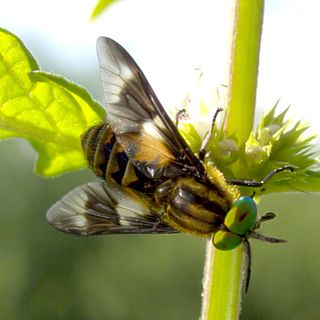
Superfamily Tabanoidea are insects in the order Diptera.

Athericidae is a small family of flies known as water snipe flies or ibis flies. They used to be placed in the family Rhagionidae, but were removed by Stuckenberg in 1973. They are now known to be more closely related to Tabanidae. Species of Athericidae are found worldwide.

Scaptia is a genus of horse-fly in the tribe Scionini.
Cornelius Becker Philip (1900–1987) was an American entomologist, noted for assigning comedic names to species he described.

Nemoraea pellucida is a species of fly in the family Tachinidae.

Dichelacera is a genus of horse flies in the family Tabanidae.
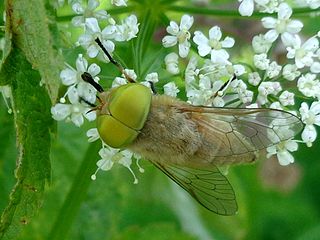
Atylotus is a genus of horse flies in the family Tabanidae.

Chrysopsinae is an insect subfamily in the family Tabanidae commonly known as deer flies or sheep flies and are bloodsucking insects considered pests to humans and cattle. They are large flies with large brightly-coloured compound eyes, and large clear wings with dark bands. They are larger than the common housefly and smaller than the horse-fly.

Xylophagus is a genus of flies in the family Xylophagidae.
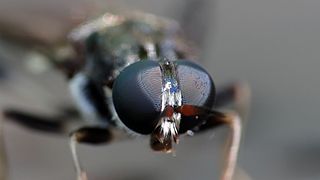
Exaireta spinigera commonly known as the garden solider fly, blue soldier fly, and spiked lion fly in Russian. The species is a part of the Stratiomyidae family. The originally described holotype of the species was kept in the Berlin Museum and was discovered when Australia was still referred to as New Holland. The original taxonomic description of the species requires translation from German using the Fraktur alphabet.
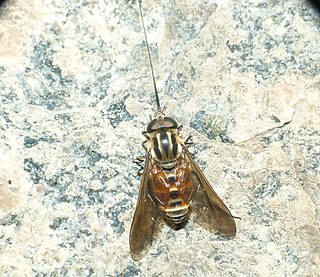
Philoliche is a genus of long-tongued Horse-flies found in the Old World. It appears to be the sole member of tribe Philolichini.
Phaeotabanus is a genus of horse flies in the family Tabanidae.
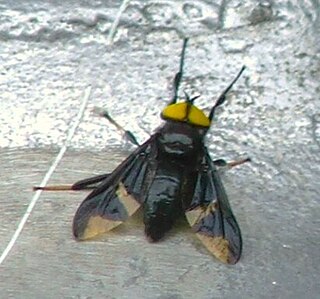
Rhinomyzini is a tribe of horse flies in the family Tabanidae.

Gastroxides is a genus of horse flies in the family Tabanidae. This genus possesses three closely placed ocelli at the vertex of the head, between the compound eyes.
















